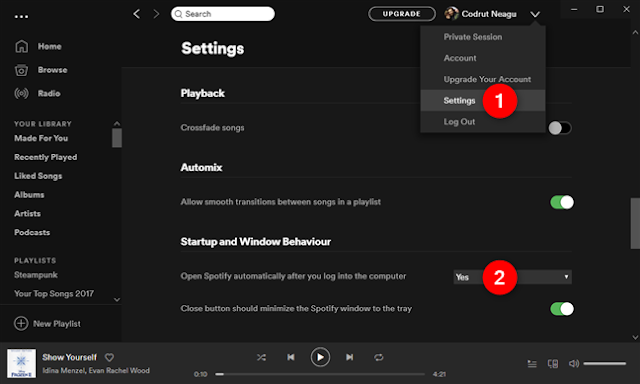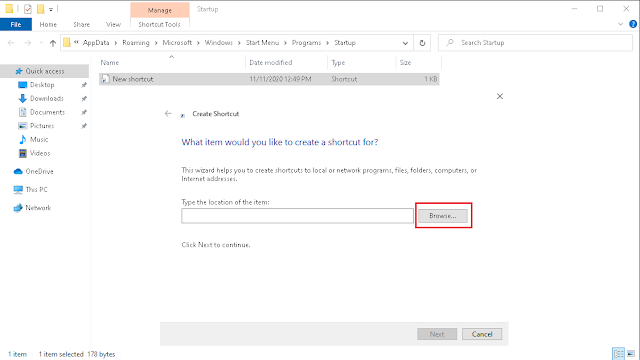In Windows 10, there are a number of applications and programs that are launched automatically when the operating system starts. These are called startup applications. While some apps configure themselves to load on Windows 10 boot, not all of your apps do, and there are instances where you might want to allow a particular app to run right away. when Windows 10 starts up.
Method 1. Check the settings of the apps you want to run when you start Windows 10
One way to get an app to launch automatically when Windows 10 starts is to configure that app's settings. Not all apps allow you to do that, but some do. Such examples include Skype, Spotify or Slack, but the list continues. Depending on the app, the setting that allows it to run on Windows 10 boot can be called start [app] when I start Windows, open [app] automatically after you log into the computer,launch [app] on login and so on.
For example, in Spotify, you have to open the App in theSettings, go to Advanced Settings and select Open Spotify automatically after you log into the computer
Method 2. Use Windows 10 Settings to allow apps to run at startup
For native apps that support a launch option at startup, you can also use Windows 10 Settings to trigger this behavior.
1. Open the Settings - a quick way to do that is to click or tap its button from the Start Menu. In the Settings , open the Apps category.
2. Select Start-up on the left side of the window, and Settings will show you a list of apps that you can configure to launch at login. Find the apps you want to run at Windows 10 boot and turn their switch on.
If you see an app that's set up to run on startup and you don't want that, you can turn off that app's switch.
Method 3. Make an app load at Windows 10 startup, using the Task Manager
Windows 10 gives us another tool that we can use to enable or disable applications running at startup: Task Manager.
1. On your desktop, right-click or press and hold on the taskbar. A menu is shown, that includes options for customizing the taskbar, as well as a shortcut for Task Manager.
2. Then, select the Startup tab from the top of the window.
If the app you want to enable to run at Windows 10 startup is displayed in the list, select it (click / tap on it), then hit the Enable button from the lower right corner of the window.
Method 4. Open any app automatically at startup by adding it to the Windows 10 Startup folder
This last method works for any app (from Microsoft Store or desktop app) that you might want to run when starting Windows 10, regardless of whether it has that option in settings. or not and even if you cannot find it in the Startup Application List from Settings or Task Manager. Furthermore, this method also works with files, folders, or even websites that you might want to open automatically when Windows 10 starts up.
1. Press the Windows key + R to open the run dialog box. Type shell:startup in the run dialog box and press Enter on your keyboard.
+ R to open the run dialog box. Type shell:startup in the run dialog box and press Enter on your keyboard.
2. Right click in the startup folder and click New. Click Shortcut.
3. Type the location of the program if you know it, or click Browse to locate the program on your computer.
Note: If you can't find your app, try opening the run dialog box back up and typing shell:appsfolder. You can drag any app from that folder into the startup folder to instantly create a shortcut.
4. Click Next.
5. Type a name for the shortcut, and click Finish.
6. Create additional links for any other programs you want to run automatically when Windows starts.
7. Restart your computer, and the new programs will launch automatically.



















No comments:
Post a Comment